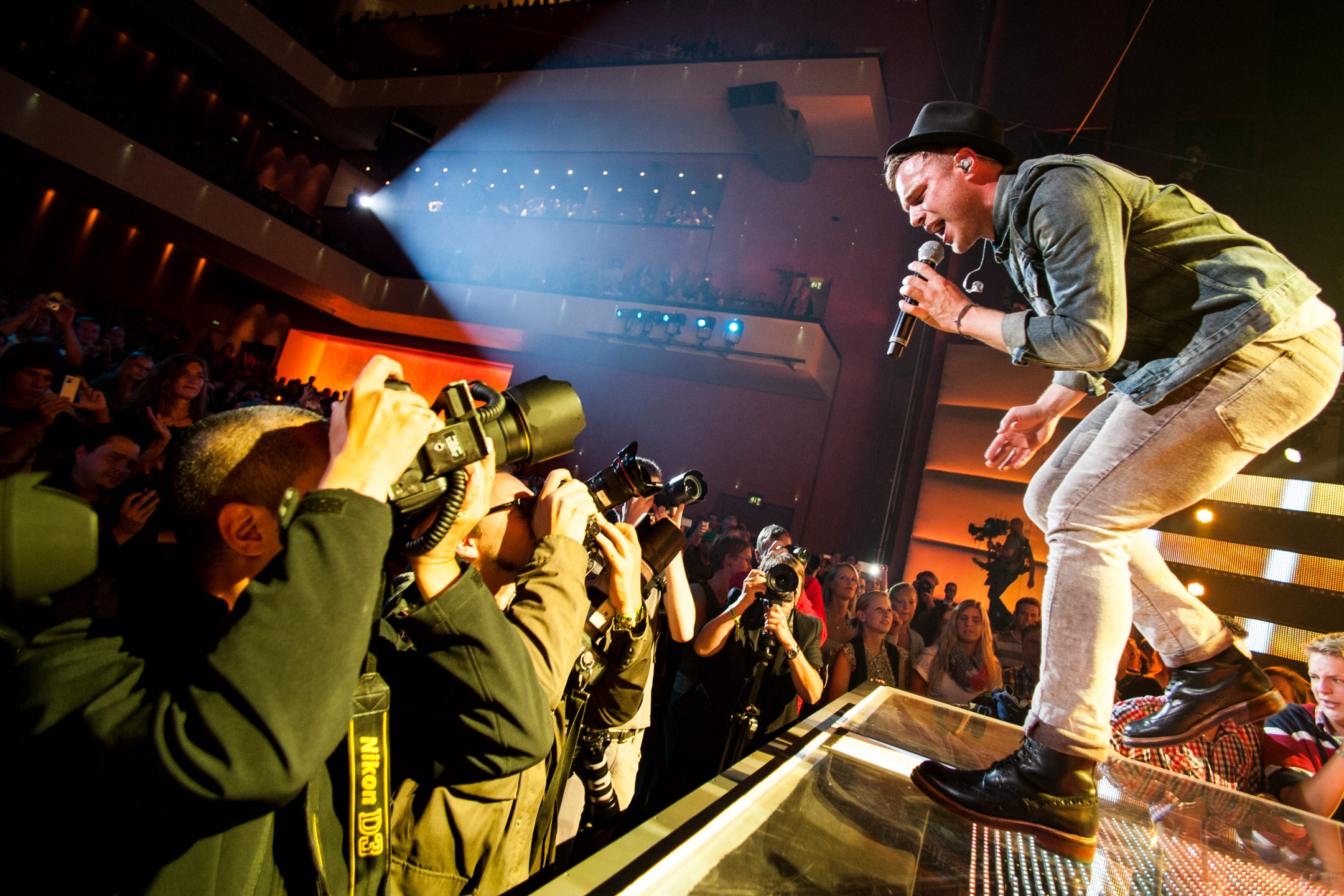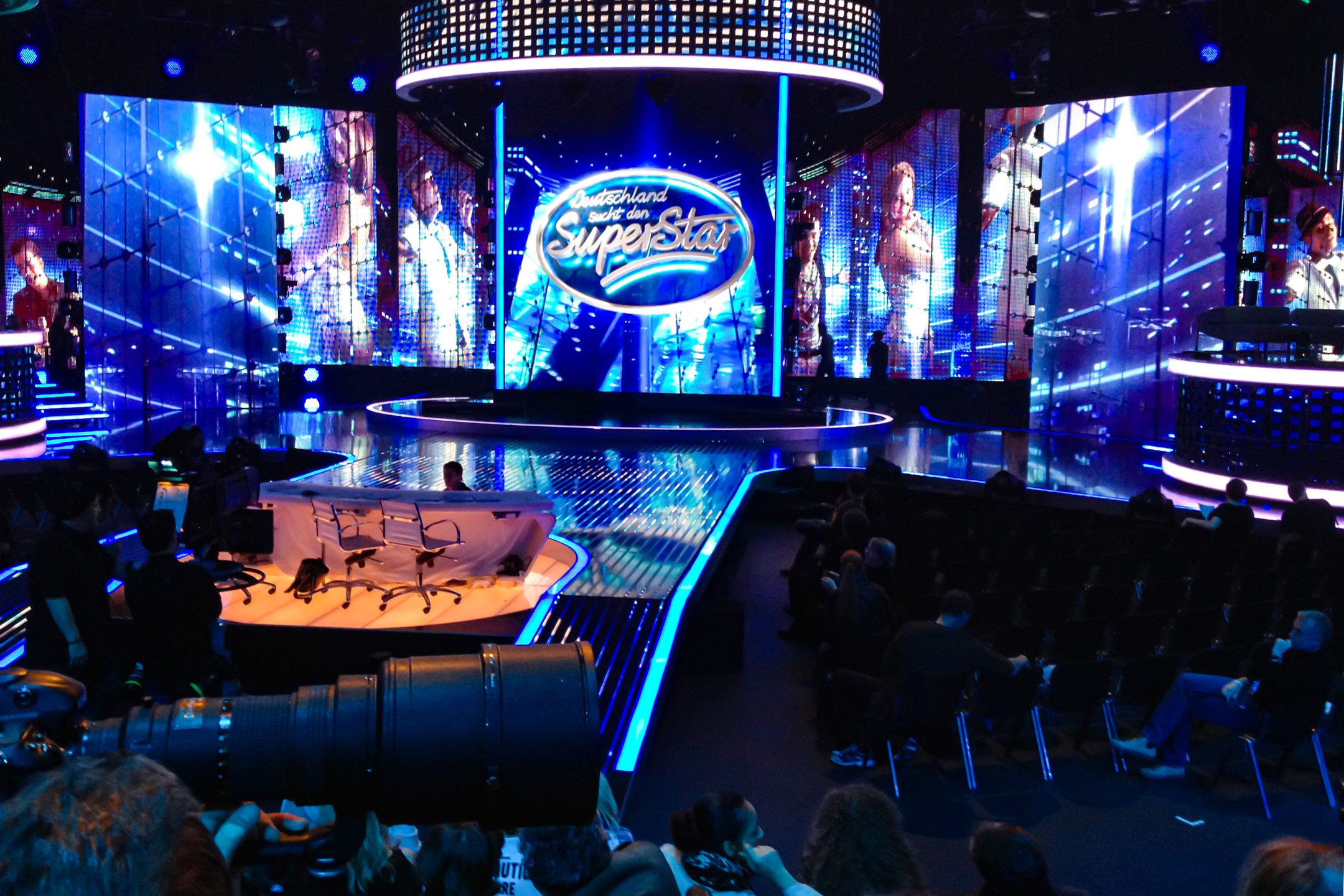People often ask how to start with concert photography and how it is to be in the front row (or pit, if there is any). Here's my brief introduction to the business. But you have been warned: You may be a little bit disillusioned afterwards.
First: It's not easy to get there. You need an assignment from a newspaper or something which tells the press officer that you have to be there for a good reason and not just for fun. The press officers usually don't give you a permit for the pit if you're hosting a personal blog or not-so-important web magazine. Try to get in touch with a well known music magazine or local newspaper and ask for an opportunity to show your skills. If you don't have any experience or portfolio shots, this might be the trickiest part. Start in small venues and keep tryin'. Sounds difficult? It is.
If you have the permit, make sure that you are able to handle your equipment without having to look at it. It's dark in the pit and you might be blinded by the flood lights. If you have to search for the settings in your camera menus, you will be lost. Set up your camera with standard settings. ISO 1600, auto white balance, aperture 2.8 and a shutter speed of a 125th second are usually a good start. I'd suggest to use manual mode, adapting the shutter speed to the lighting conditions and then see what you're getting. If you use any picture programs, you will never get replicable results. And even worse, wou'll never find out why, because the camera does the thinking for you. Most of my shots have been done in manual mode and except of some extreme lighting conditions the settings above are used for the majority of the pictures on this website.

Photographers in the photo pit at SWR3 New Pop Festival
The gear... most asked question ever (see the complete gear article over here). My response: Keep it light and fast. I prefer a small setup with fast prime lenses over the versatility of zoom lenses. Also, the pro cameras like Canon 1D-series cameras are fast and ultra-reliable machines - but they are heavy and expensive. I'd rather buy some lenses instead of buying a pro camera. It might look cool and professional, but it doesn't give you better results just because it's a pro tool. And you will never become a pro just because you're using their tools. Depending on you budget, consider a semi-pro full frame camera and a set of 35/50/85mm prime lenses. You'll be able to cover 90% of all jobs with a setup like this. And, on top you will be able to take shots in dark conditions where you'll find yourself often especially at the beginning.
If you made it to the pit, you have to get familiar with the conditions. As long as the lights are on, you might see something - but once the lights are out you must be able to walk through the pit without stumbling upon cables or things lying around there. Be aware of other photographers, don't stand in the way of your colleagues. Keep an eye on the securities and by all means: Be friendly and don't argue with them. They have the most exhausting and dangerous job, and if they have to pull someone out of the front row it might be a very grave situation with a threat to life or physical condition for visitors. No picture is so important that you may risk to constrain one of the securities while they try to do their job.
While taking photos, keep in mind that you have to look through all those images afterwards. So don't use continuous shots, since it doesn't bring you better results, just more results. Try to anticipate the movements on stage and concentrate on your subject to find the right timing for a single shot. It requires lot's of practice, but in the end, it will provide the best results by far. Also, do some safe shots of all band members first, in different angles and picture orientations. Afterwards you might try something new or experiment with settings, views or anything else. This prevents you from coming home without any usable result.
Shooting in RAW or JPG mode? RAW, for sure. Disk space has gotten cheap in the last years and for the sake of quality, it's not worth to stay with the old JPG format which is a dead end in terms of post processing. If you're doing post-processing, be careful. You have to develop your own style, but don't do this by post-processing. Find your own picture language by training your photographing skills instead of doing fancy post-processing. On top, most agencies like Getty, Reuters and others don't accept edited pictures.

Your usual view when photographing TV shows: Somewhere in the back row with a huge telephoto lens...
Let's look at the business side of the job: Never give away your pictures for free or low rates. Many people will tell you fairy tales about the big opportunities they have for you after giving them pictures for free. Think twice: There's not a single business model in the world based on the idea to give something away for free. And photo credits don't pay your rent. Giving away your pictures for free or low rates destroys the business, so stay away from people wanting something for free.
Did i mention backups? Do backups. Your pictures may become a huge asset somewhen, so take care of them. Do not store them on a single hard drive in one location. Always use storages with multiple drives and have a second copy at an off-site location. Bad things happen, be prepared for the worst. It's part of the professional approach to the business which you should follow if you want to become a successfull photographer. Being professional also means to do your homework in terms of accounting, customer care and reliability. No one likes business partners with great capabilites in taking photos that are always sending incorrect invoices, never show up for some small talk and are always late at the show. So take your time for planning, caring about your customers and office work. It's worth the time.
Have questions? Send me an email. Keep in mind: I'm not here for answering questions, so please be patient and give me some days for your answer. Thanks.